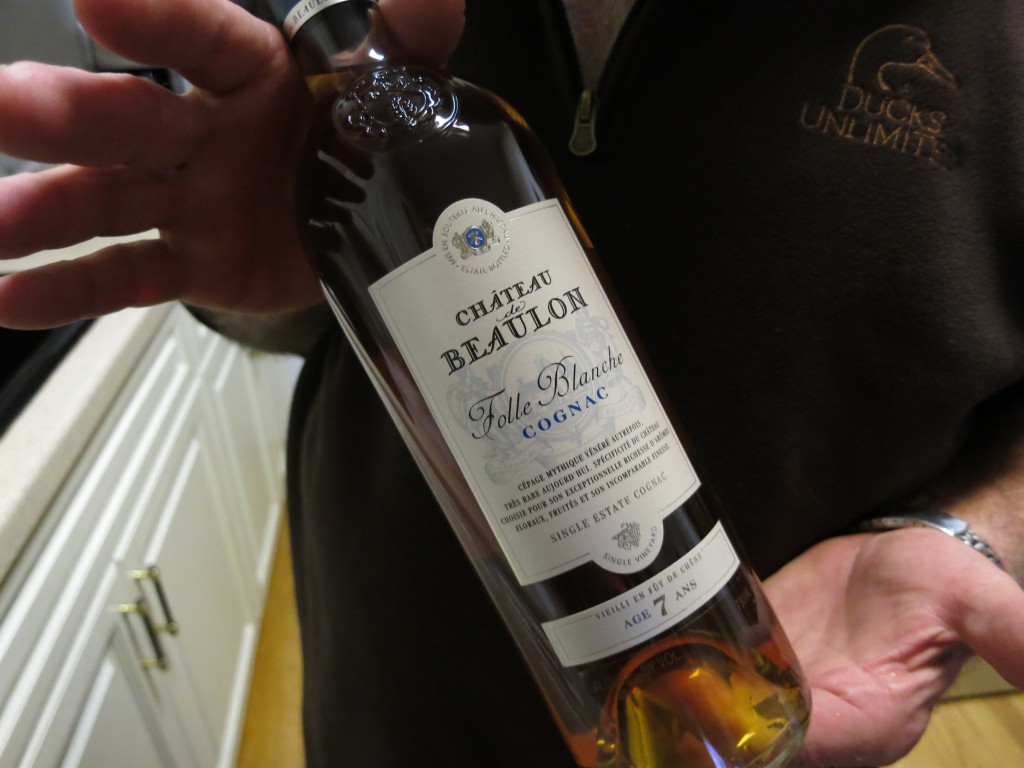A Taste Of Cognac History
 If I had to choose just one spirit to consume for the rest of my life, I would be crushed, but after I got over the initial shock of being forced to make such a difficult decision, I would choose cognac. I’ve had the fortune to taste quite a few cognacs, including the most famous brands, delicious small-production gems and even a couple of cognacs which literally brought me to tears. If you think cognac is just for aging aristocrats or rap stars, you’re missing out on an exquisite beverage that need not be burdensomely expensive to be thoroughly satisfying.
If I had to choose just one spirit to consume for the rest of my life, I would be crushed, but after I got over the initial shock of being forced to make such a difficult decision, I would choose cognac. I’ve had the fortune to taste quite a few cognacs, including the most famous brands, delicious small-production gems and even a couple of cognacs which literally brought me to tears. If you think cognac is just for aging aristocrats or rap stars, you’re missing out on an exquisite beverage that need not be burdensomely expensive to be thoroughly satisfying.
I’m pleased to drink just about any cognac, really, but I get especially excited when I have the opportunity to taste an unusual cognac. The Château de Beaulon 7-Year Cognac doesn’t look especially unusual at first glance, nor is it even especially old. But two words on the label make it immediately clear that this is not your everyday cognac: Folle Blanche.
Cognac, like all brandies, is distilled from grapes (you can read more about cognac production and age designations in my post here). In cognac’s earliest incarnation, these grapes tended to be Folle Blanche as much as anything. More recently, particularly after phylloxera ravaged the Cognac’s vineyards in the late 19th century, Folle Blanche was replaced with Ugni Blanc (Trebbiano).
There were a number of reasons farmers turned from Folle Blanche to Ugni Blanc. According to Cognac by Kyle Jarrad, Folle Blanche “tend[s] to suffer from rot when grafted onto American roots,” and grafting was the solution to the phylloxera epidemic. Just as important, Cognac producers “don’t want to start the process with a wine that is highly aromatic… Better to start the aging with the more acidic wine that Ugni Blanc gives,” to leave more room for the oak barrels to flavor the spirit.
Almost all cognacs you drink nowadays are distilled mostly or entirely from Ugni Blanc. Distilling a cognac from Folle Blanche instead is a reactionary move; it’s a throwback to the cognacs of the 19th century and earlier. In fact, according to the Château de Beaulon website, “Beaulon has remained faithful to the region’s traditional 16th-century vine stocks: Folle Blanche, Colombard and Montils for Cognac.”
Though it is possible to purchase cognacs with at least part of the blend dating back a century or more, such as the extravagantly beautiful Hennessy Paradis Impérial, those seeking a taste of cognac’s past will find the Château de Beaulon much easier on the pocketbook. And you certainly won’t feel like you’re making a sacrifice when you drink it.
The light caramel-colored cognac had a bright aroma with strong vanilla cake notes and a hint of ripe banana. When I took a sip, I felt a top plane with dark vanilla and wood flavors overlaying a lower plane bright with green peppercorn spice. It seemed a little lighter and fruitier than many cognacs I’ve tried, and very well-balanced, cheerful and smooth.
Cognac may have long since moved on from its Folle Blanche roots, but Château de Beaulon resolutely clings to tradition with exceedingly pleasurable results. If the cognacs of centuries past tasted like Château de Beaulon’s, it’s not hard to see why it has remained such a highly regarded spirit today.
If you’re planning on serving a digestif after your Thanksgiving dinner, and I strongly recommend it, a cognac like Château de Beaulon’s would be just the thing.





